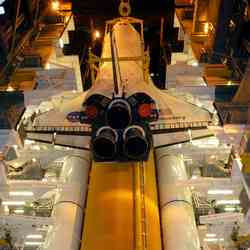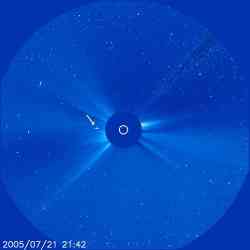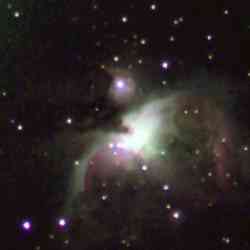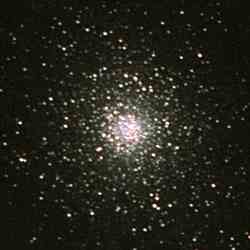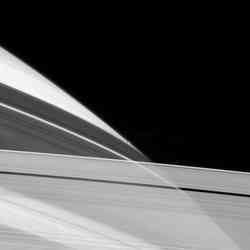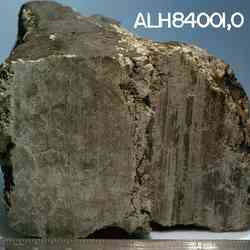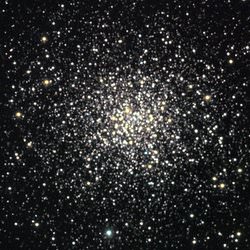
M107. Image credit: NOAO/AURA/NSF. Click to enlarge.
Monday, July 25 – With the later rise of the Moon this week, we’ll have the opportunity to do some study of globular clusters. Let’s start with one that is often overlooked – M107. Discovered by Pierre Mechain in 1782, and added to the catalog in 1947, it’s probably one of the latest of the Messier objects to be discovered and wasn’t resolved into individual stars until studied by Herschel in 1793.
Located about one quarter the distance between Zeta Ophiuchius and Beta Scorpius, the M107 isn’t the most impressive of globulars, but it is surprisingly bright in a small telescope. It’s a curious cluster, for some believe it contains dark, dust obscured areas which makes it unusual. Located around 21,000 light years away, this little beauty contains around 25 known variable stars. Visually, the cluster begins to resolve around the edges to mid-aperture and the structure is rather loose. If sky conditions permit, the resolution of individual chains at the globular’s edges make this globular well worth a visit.
Tuesday, July 26 – Tonight let’s continue on our journey through the galactic halo and pick up the M9 located around 3 and a half degrees east of Eta Ophiuchus. Discovered by Messier in 1764, this particular globular cluster is one of the nearest to our galactic center, and is around 2,600 light years away from our solar system. Now let’s notice differences – check out the contrast between this small globular’s appearance as compared to last night’s M107. At this point we’re seeing not only a strong central concentration, but a slight oval shape. This change in structure is caused by the strong absorption of star light by dust along its northwest edge. Of its huge stellar population, only a dozen or so variable stars are known in M9, which is rather few for a cluster of its size. Visually, it appears more compact and slightly oblate. Rather than chains of stars resolving at the edges, the M9 appears to have larger, individual stars in a random pattern.
For those with larger scopes, you also have the opportunity to study two more that are nearby – NGC 6356 about a degree to the northeast and NGC 6342 to the southeast. You will find the NGC 6356 to be rather small – but bright. The NGC 6342 appears to be even smaller and far less distinct. Compare them both to the structure of the M9 and you will find the 6356 to be the most concentrated of the three.
Wednesday, July 27 – This morning the Moon dances with Mars. Luna will appear about half a fist width to the northwest (upper right) of the Red Planet just before dawn.
Tonight we’re going monster hunting, and heading about a fist’s width north of Beta Librae towards a previous study – double star 5 Serpens and the glorious M5. First discovered by Kirch in 1702, re-discovered by Messier in 1764, and resolved by in 1791 by Herschel, this fifth brightest globular cluster in the sky is considered to be one of the most ancient and may be as many as 13 billion years old.
Further away from the dusty galactic center, resolution explodes as the viewer moves up in aperture. Easily seen as roundish ball of unresolved stars in binoculars, even small scopes will begin to pick individual stellar points out of this mass and begin to realize that the M5 is not perfectly round. Its brighter stars are also distributed randomly and it contains an unusually large number of variables. Note its structure. While it is far more grand than the others we have observed, it is far less concentrated at the core.
Thursday, July 28 – This morning the Moon has waltzed to the other side of Mar’s position, putting it about a fist width to the planet’s northwest. Notice that Mars continues to brighten and will soon have reached -1 magnitude as it moves toward the Sun. Today in 1851, the first photograph of the Sun was made during a total eclipse revealing the corona for the first time.
Tonight we will hustle off to explore a single small globular – M80. Located about 4 degrees northwest of Antares (half a fist), this little globular cluster is a powerpunch. Located in a region heavily obscured by dark dust, the M80 will shine like an unresolvable star to small binoculars and reveal itself to be one of the most heavily concentrated globulars to the telescope. Discovered within days of each other by Messier and Mechain respectively in 1781, this intense cluster is around 36,000 light years distant.
In 1860, the M80 became the first globular cluster to contain a nova. As stunned scientists watched, a centrally located star brightened to magnitude 7 over a period of days and became known as T Scorpii. The event then dimmed more rapidly than expected, making observers wonder exactly what they had seen. Since most globular clusters contain stars all of relatively the same age, the hypothesis was put forward that perhaps they had witnessed an actual collision of stellar members. Given the cluster contains more than a million stars, the probability remains that some 2700 collisions of this type may have occurred during the M80’s lifetime.
Now grab a comfortable seat because the Delta Aquarid meteor shower reaches its peak tonight. It is not considered a prolific shower, and the average fall rate is about 25 per hour – but who wouldn’t want to take a chance on observing a meteor about every 4 to 5 minutes? These travellers are considered to be quite slow, with speeds around 24 kilometers per second and are known to leave yellow trails. One of the most endearing qualities of this annual shower is its broad stream of around 20 days before and 20 days after peak. This will allow it to continue for at least another week and overlap the beginning stages of the famous Perseids.
The Delta Aquarid stream is a complicated one, and a mystery not quite yet solved. It is possible that gravitation split the stream from a single comet into two parts, and each may very well be a separate stream. One thing we know for certain is they will seem to eminate from the area around Capricornus and Aquarius, so you will have best luck facing southeast and getting away from city lights. On a personal note, I have observed high activity from the region for the last two weeks, which means we may be passing through a more heavily concentrated portion of the stream. While I cannot guarantee you’ll see significant activity, I highly urge you to enjoy a warm summer night and take a chance at “catching a shooting star”.
Friday, July 29 – The weekend has arrived at last, and if you have not had the chance to observe the earlier globular clusters, pick them up tonight and let’s head on out towards two more giants that appear differently from the rest (and each other) – previous study M10 and M12.
Located about half a fist width west of Beta Ophiuchus, the M12 is the northern most of this pair. Easily seen as a hazy round spot in binoculars, let’s find out what makes it tick. Since this large globular is much more loosely concentrated, smaller scopes will begin to resolve individual stars from this 24,000 light year distant cluster. Note there is a slight concentration toward the core region, but for the most part the cluster appears fairly even. Large instruments will resolve out individual chains and knots of stars.
Now let’s drop about 3 and half degrees southeast and check out M10. What a difference in structure! Although they seem to be close together and close in size, the pair are actually separated by some 2,000 light years. The M10 is a much more concentrated globular showing a brighter core region to even the most modest of instruments. This compression of stars is what classifies one type of globular cluster from another and M10 appears brighter, not because of this compression, but because it is about 2,000 light years closer.
Saturday, July 30 – Before sunrise this morning look for the waning crescent Moon as it travels along the returning constellation of Taurus. Aldebaran, the “eye of the bull” will appear about a fist width below Selene. The Pleiades will complete the scene as it appears about half a fist width to the Moon’s upper right. Take out your binoculars to take a peek at the “Seven Sisters”.
For central through western Australia and toward Indonesia, viewers will have the opportunity to see the Moon occult the Pleiades. This is an event you won’t want to miss, so please check this IOTA webpage to get precise times in your location. Clear skies!
For hard core observers, tonight’s globular cluster study will require at least a mid-aperture telescope, because we’re going after a same field pair – NGC 6522 and NGC 6528. You will find them easily at low power just a breath northwest of Gamma Sagittarius, better known as Al Nasl – or the tip of the “teapot’s” spout. Once located, switch to higher power to keep Gamma out of the field and let’s check them out.
The brighter, and slightly larger, of the pair to the northeast is NGC 6522. Note its level of concentration and compared to NGC 6528. Both are located around 2,000 light years away from the galactic center and seen through a very special area of the sky known as “Baade’s Window” – one of the few areas towards our galaxy’s core region not obscured by dark dust. While each are similar in concentration, distance, etc., the NGC 6522 has a slight amount of resolution towards its edges while the 6528 appears more random.
Now, relax and enjoy the peak of the Capricornid meteor shower! Although it is hard for the casual observer to distinguish these meteors from the Delta Aquarids, no one minds. Again, face the general direction of southeast and enjoy! The fall rate for this shower is around 10 to 35 per hour, but unlike the Aquarids, this stream produces those great “fireballs” known as bolides. Enjoy…
Sunday, July 31 – For viewers in eastern and central Australia and all of New Zealand, you will have the opportunity to see the Moon occult Beta Tauri this morning. Please check this IOTA webpage for times and locations in your area.
Tonight we’re going to move back toward Ophiuchus and a globular cluster unlike any that we’ve seen so far – M19. Locate Antares and about a fist width to the east you will see Theta Ophiucus with fainter star 44 to its northwest and multiple system 36 to the southeast. Move around 2 degrees to the west of 36 and let’s check it out.
With a visual magnitude of 6.8, this class VIII globular cluster can be seen with small binoculars, but requires a telescope to begin to take on form. Discovered by Charles Messier in 1764, the M19 is the most oblate globular known. Harlow Shapely, who studied globular clusters and cataloged their elliptical natures, estimated about twice as many stars along the major axis as along the minor. This stretching of the cluster from its accepted round shape may very well have to do with its proximity to the Galactic Center – a distance of only about 5,200 light years. This makes it only a tiny bit more remote from us than the very center of the Milky Way!
Very rich and dense, even smaller telescopes can pick up that this globular cluster has a faint blue tinge to it. It is definately one of the more interesting, due to its shape, but for the adventurous? There’s two more. The NGC 6293 is about a degree and a half to the east/southeast and is far brighter than you might expect. Note how much more round and concentrated directly at the core this companion is. Now move about a degree and a half to the north/northeast of M19 to find dimmer NGC 6284. Although it is the same size as the 6293, look at how much more “loose” this one is constructed!
Our globular cluster studies will continue next week, so stick around! In the mean time? May all your journeys be at Light Speed… ~Tammy Plotner

